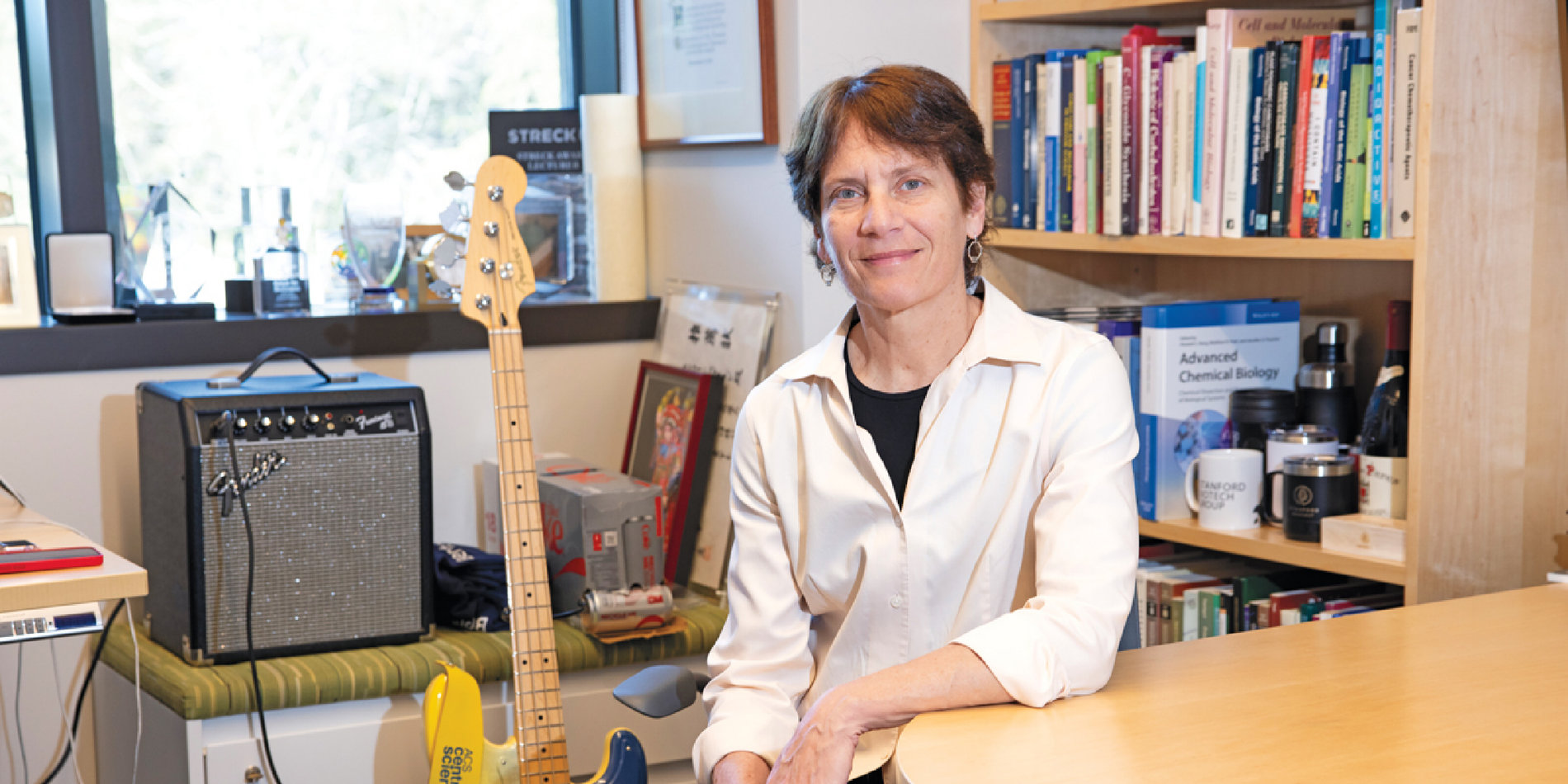Jon Long on an interdisciplinary approach to studying human metabolism
Jon Long, an assistant professor of pathology, joined Stanford ChEM-H as an Institute Scholar in 2018. Before coming to Stanford, Long completed his graduate work at the Scripps Research Institute, where he studied and designed inhibitors for enzymes in the brain. During his postdoctoral training at Harvard Medical School, he moved into endocrinology, studying the molecules that control metabolism. Here, he answers some questions about how he got to ChEM-H, the collaborations he has built so far, and the “Wild West” of metabolism.

What attracted you to Stanford ChEM-H?
When I read the ChEM-H job posting, I felt like it articulated what I had been doing through my entire training. I have always been interested in using chemistry to study biological processes and understand how malfunctions in them lead to human disease.
ChEM-H is an institute where we take our understanding of molecules and apply it for the benefit of human health. Here, there is a network of wonderful engineers and chemists who think molecularly and clinicians and patients who help to illuminate what the big problems are in human health today. I’m not a synthetic chemist, I’m not a biochemist, I’m not an endocrinologist, but I am ChEM-H.
Can you tell me a little about your research?
We are interested in the questions surrounding human energy metabolism. How do we process energy, and how do we use it? The metabolic tissues of our body – muscles, heart, liver, fat, stomach – are all involved in a joint effort to process energy. This coordination requires small molecules called metabolites. These metabolites are connected through a web of the enzymes that make them, the transporters that ferry them across cell membranes, the carriers that shuttle them between your tissues, and the receptors they act on.
The goal of our research is to discover new connections in the metabolic web and new metabolites that regulate our body’s ability to process energy. Despite what textbooks might tell you, much of the biochemistry of metabolism is largely uncharted. In the future, we’re going to look back on this time and think that this field was so fertile and under-explored. It’s the Wild West.
What impact could this kind of research have on human health?
Many of us take drugs that regulate our metabolic health, maybe even without realizing it. If you take statins, you are blocking cholesterol biosynthesis to reduce your risk of heart attacks. If you take beta blockers, you are blocking catecholamine receptors to manage high blood pressure. If you take metformin, you are reducing glucose production in the liver to manage diabetes.
It’s my dream that one day, our work might uncover a new pathway that can be therapeutically targeted to make a difference for metabolic disease.
How has being at Stanford ChEM-H influenced your research?
I have many direct collaborations and peripheral influences that have been shaping my research and thinking. Our work would not be possible without Curt Fischer in the ChEM-H Metabolic Chemistry Analysis Center. He’s an expert in mass spectrometry, a method we use to find these unknown metabolites. We have an ongoing collaboration with Josh Knowles, a cardiologist at Stanford Medical Center, to see if certain chemical messengers are dysregulated in patients who come through his cardiology clinic.
We are working with Matt Bogyo, who is also a chemist by training in the Department of Pathology. With his chemistry knowledge, we can think molecularly about these metabolic pathways and how we could modify molecules to change their function.
In the new Neurosciences/ChEM-H research complex, I will be sharing a space with Lingyin Li. Until then, my lab is in the chemistry department, a network that exposes me to chemistry that I didn’t know anything about. Lynette Cegelski, Steve Boxer, Bianxiao Cui, and Carolyn Bertozzi are all nearby. It’s been eye-opening, because you can’t help but be influenced by your environment.



